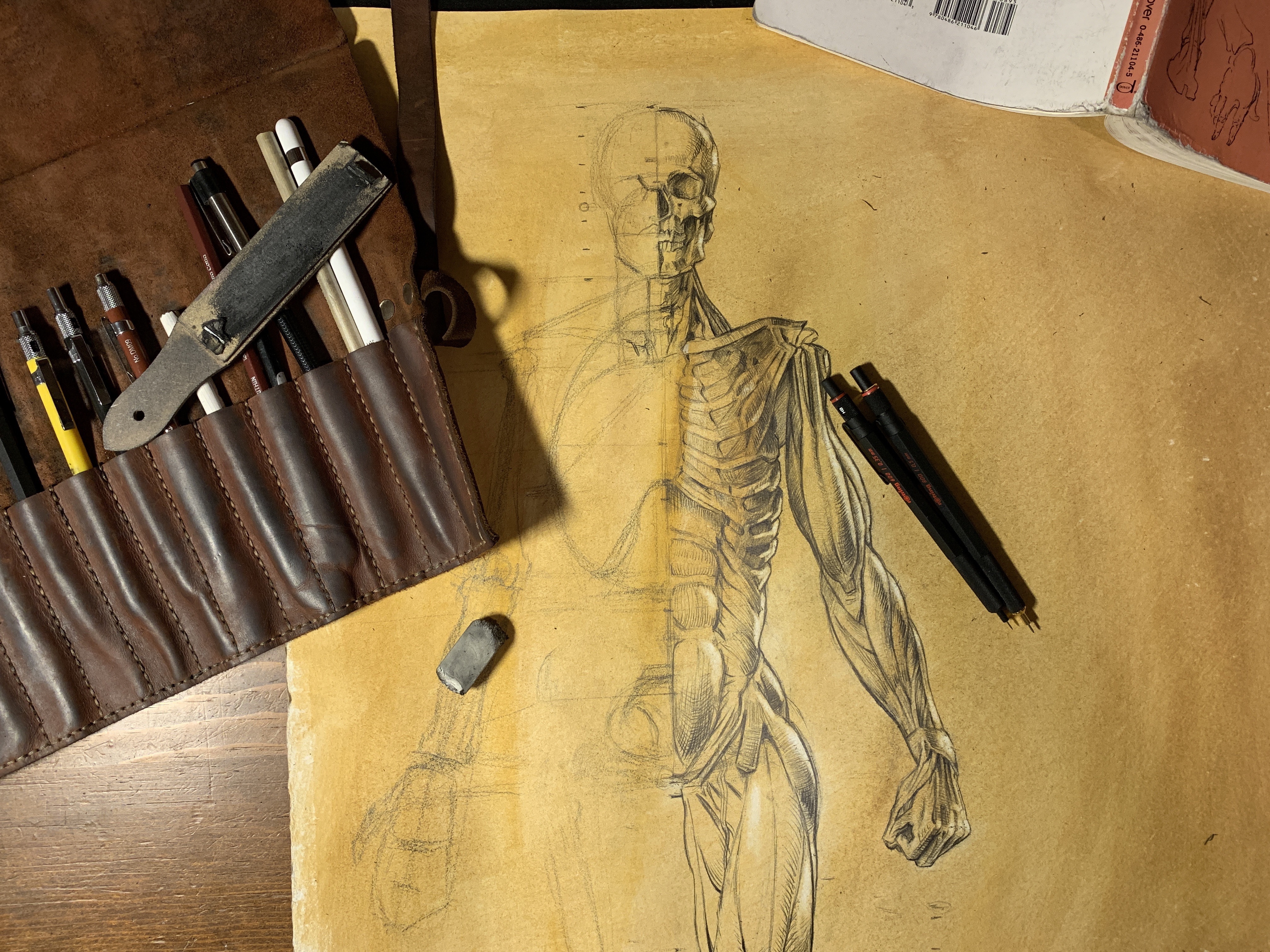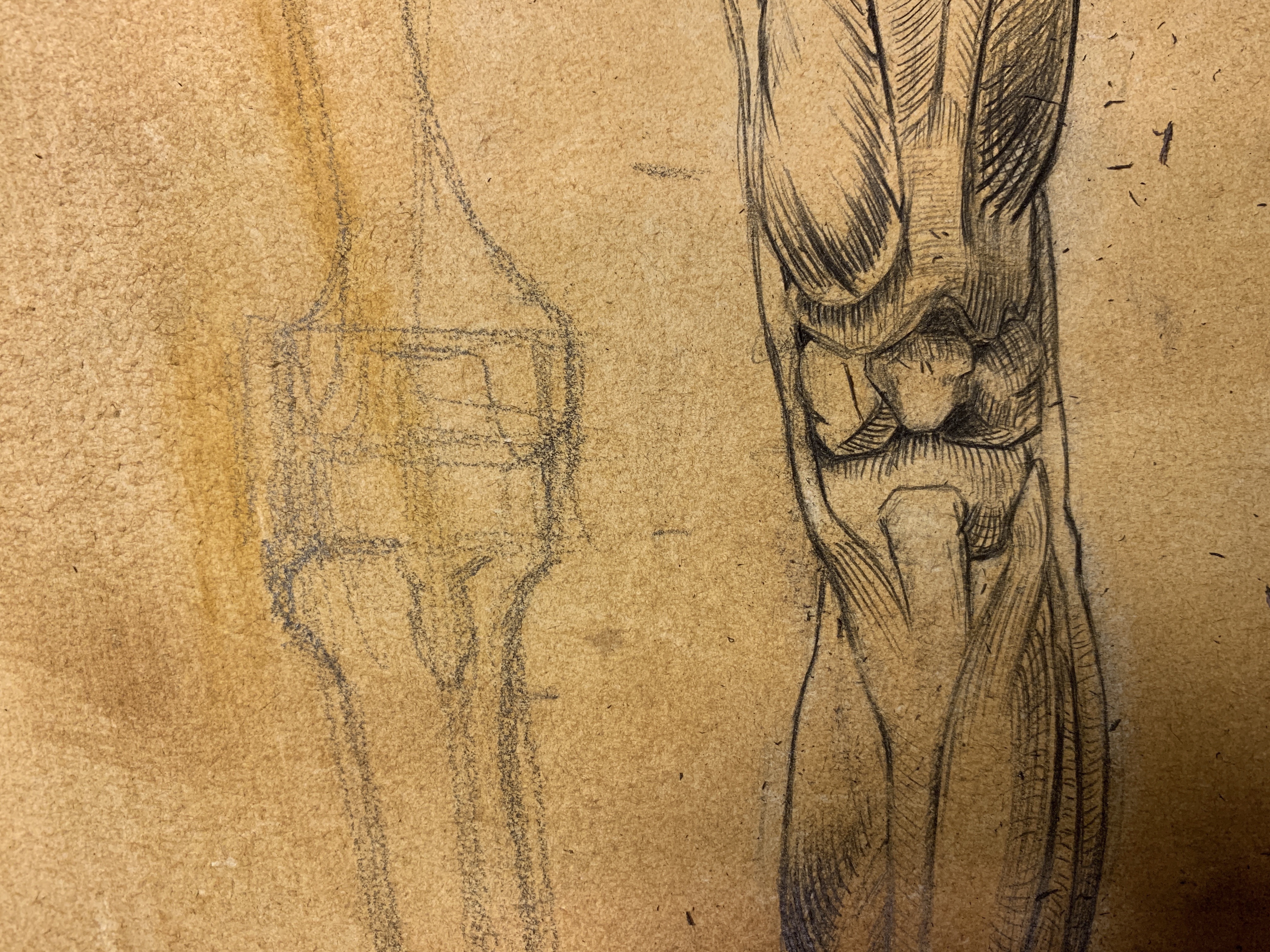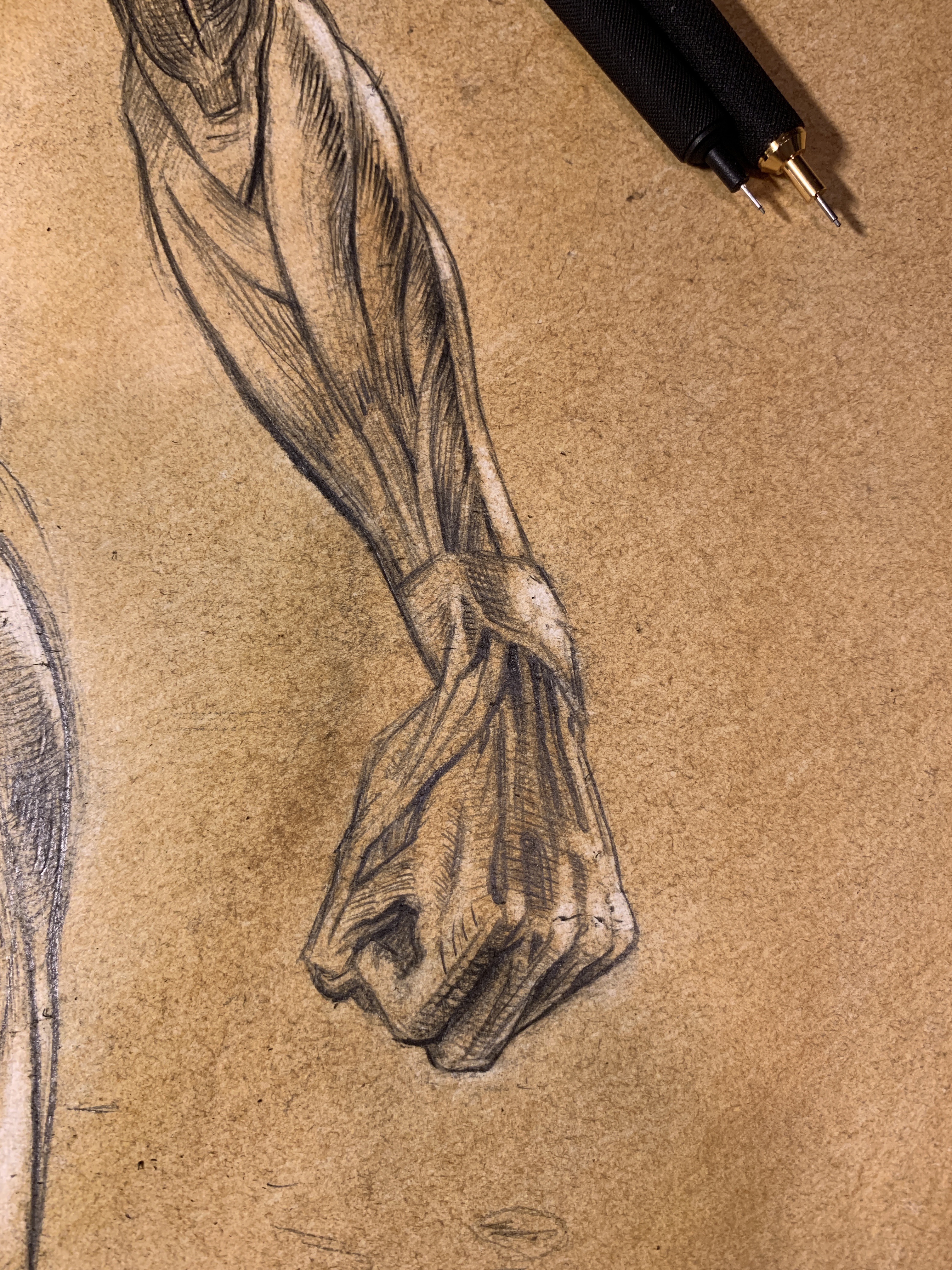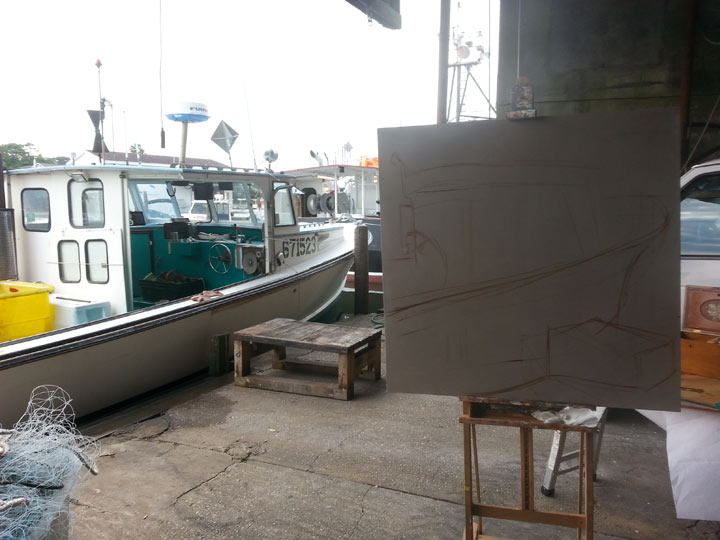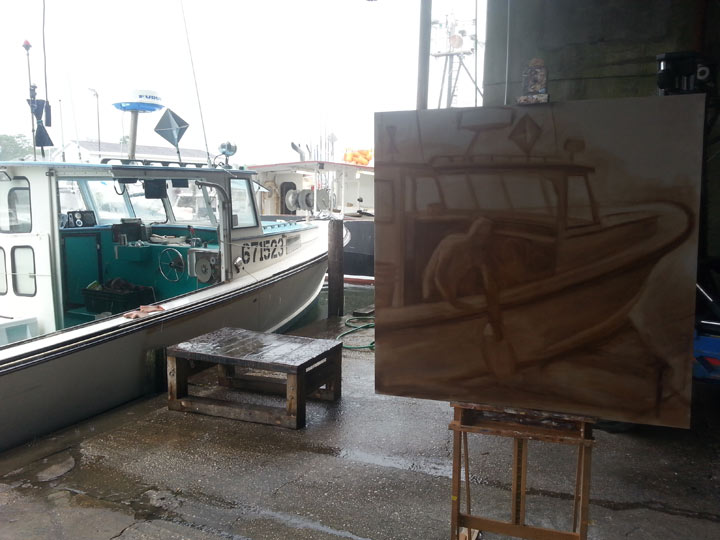I pickup up my little boy, Quinlan, and placed him in the crook of my elbow, while I balanced my coffee on an obliging brick wall. I balanced the bike perfectly, and turned with the baby in my arms. Attached to the back of my bike was some child carrier type thing which we affectionately call “the rickshaw.” I stooped down to drop Quinlan gently in to his seat in the rickshaw, and I called out to Evan. Out he came from the coffee shop, his helmet on backwards. “Let’s go, buddy. Into the seat.” He climbed in to the rear carrier, popped a cookie into his mouth. All the while, Liam sat waiting, dutifully, on his new blue bike. “Dad, it’s taking a long time” Liam softly chided. “I know, I know. But we’re going to Islip beach. And dad needed to pick up his coffee, first.”
We sidled down quiet lanes in Islip, a mirthful troop of peripatetic gypsies, me on my mountain bike, the two younger boys towed behind in the rickshaw thing, and Liam peddling away. Everyone knew the routine. First we go to Main Street to pick up coffee. Then, we head down to the water. As we plodded along, with Evan singing, and Quinlan cooing, Liam trying his best to peddle in front, while I tried my best to drink my coffee quickly, before the bumps in the road relocated my coffee to my shirt. Small, cozy little homes with tiny plots of land slowly gave way to middle sized homes, with slightly larger side yards. Eventually, the sound of cars grew dimmer, the calls of the birds grew louder, and we were rolling beside larger homes, and the trees formed a thick canopy above our heads. We were leaving the residential area, and in front of us was the dark forest.
Etymologists or ecologists could provide me the definition of “forest” that might correct my use of the term, but to me and my boys, the forest is a patch of sixty five or so acres that sits between the homes of Islip, and the Great South Bay. When you go to the forest, the homes are nowhere in sight. The trees are broad, and the foliage is very dense, and there is a road that cuts down the middle. Long Island is a hectic place, a hurried place, a harried place that made the unfortunate mistake of marrying the Puritanical New England work ethic to Babylonian materialism. But suddenly, amidst the frenzy, there is an oasis. This forest, home to snakes, and box turtles, and snapper turtles, and egrets, and herons, and osprey, and deer, and birds so exotic I can’t identify them. Deep inside the woods is an exquisite, castle like estate, a stone structure that is as well built as any Medici palace I’ve ever walked through, and now functions as nature preserve. My boys quietly babbling away, I sipped my coffee as I rode my bike, and I made the same remark I’ve made a thousand times before- how did this happen? Why didn’t somebody snatch up this land, chop it down, fill it, pave it, and slap fifty condominiums on it? How was this spit of land saved from suburban sprawl? It’s the only chance that my boys have, to experience any of the wonder and awe of a Huck Finn childhood. Countless mornings, we bike down this road, and a hush comes over us every time.
Eventually, the forest gives way to wetland. As our bikes slugged along, the sky opened up, and we were surrounded by cat tail reeds. The wind moves across the reeds in waves, and the reeds whisper softly, consolingly, steadily, as if to strip from me any residual angst from expressways and highways that may have clung to my clothes. Finally, we are at Islip beach.
There is nothing so very special about Islip beach, were you to compare it with its famous oceanfront cousins. It is a bay beach that is several hundred feet wide, and looks across at Fire Island. But when Margaret and I dated, we spent countless hours sitting at this beach. Alongside a dozen other cars, we ate egg sandwiches as the sun rose. We held Easter morning church services in the gazebo, we sailed sunfishes from the western end in midday, we sipped iced tea as the sun set, and we returned to our cars when the local police officer came to kick us out. And so, when Margaret and I came to be married, this beach mattered more to us than the actual home we would move in to. The home could be this or that, but what mattered was that we had to be a bike ride away from the beach. Spring, summer, and fall, the boys climb the life guard stand, they run around the playground, they dig out hermit crabs, they learn to swim, they cry when they fall off of slides, they drop ice cream pops into the sand and rinse them off in the sea, they fall asleep in my arms as I walk along the water. Islip beach is sacred ground.
This week, I invited the seventh individual to sit for a portrait, as part of the “Nine Faces of Islip” series. My wife Margaret has urged me to paint Kay Erwood, a local figure that has devoted decades of her life to the community. “KIC- Keep Islip Clean” is the simple logo on her office door, but judging from the profound legacy she has in this town, I felt that there must be more to her story. This afternoon, I was delighted to hear Kay knock on the door of the building, and I ran down the stairs to greet her. “Hello, Kevin, thank you so much for calling me. I’m thrilled to be a part of this “Faces of Islip” thing that you are doing, I read about it in the paper. It just sounds wonderful!” Her smile was among the most contagious, uplifting smiles I’d ever encountered. She went on to say that she remembers my wife as a little girl, and that “little Margaret was so helpful, joining my KIC groups.” Though it was two decades ago, she remembers small details about Margaret, and remembers her friends all by name.
Moments later, she is sitting atop a model base, and is ready to begin posing for the portrait. Her face is lit up with a broad, generous grin, and she continues talking. As I mixed my paints, we discussed this and that, and somehow I brought up a recent bike ride. “And then my boys and I continued on to Islip beach, when we” – and suddenly Kay cuts me off. “Oh, I’m so glad you use the beach, it is wonderful down there, isn’t it? We got it all recovered from Hurricane Sandy, and I’m so glad the families are back using it again. How do you like it?” She spoke as if she were directly involved, and so I instantly realized that she must play an important role. I told her how we loved the beach, how many times a week we take ambling bike rides down as a family. She listened quietly, and said “You know, there was a time when all that was in jeopardy. Let me tell you the story of Islip beach.”
Thirty years ago, Islip beach was a terrible eyesore. A long, crumbling cement wall ran down one side, covered with graffiti. The parking lot was disintegrating, facilities were run down- it was not a destination. Above the beach and adjoining this land, Kay was friends with the woman who lived in the “castle” in the woods. Before the owner of the castle died, she drafted a will mandating that her land all be given to the public as a nature preserve and community center. But as the beach was neglected, and the castle was shuttered up, an investor group came along with a proposition: they would buy both the crumbling town beach and all the adjoining woodlands, and create a new community of condominiums. Plans were drawn up for the woods to be leveled, the wetlands to be filled with earth, and for scores and scores of tightly packed homes and condominiums to be crammed in, clear up til the water. Clearly, there was tens and tens of millions of dollars to be made here. And so, the customary, rote town meetings were held, before the fleet of cement mixers began filling the wetlands.
But Kay Erwood went to the meeting. So did her friend Nancy, and a few other women. And there was Kay, standing up in town hall, demanding that the wetlands be saved, the woods be utilized as a nature center as the will had stipulated, and that Islip beach be rebuilt. A small, petite little woman with a winning smile and a steady passion in her voice, standing up to huge construction companies and hulking development corporations- not to mention the political spectrum she must have encountered. The opposition faced by Kay and her friends must have been fierce, though I don’t know much more of the story. Kay said “Good things are worth fighting for. And that fight can take a very long time. But, we won, and they completely restored that little part of the bay, transforming it into a beautiful little spot. And now you have Islip beach, and the wetland nature preserve.”
I was three quarters of the way done with the first day’s work of painting Kay Erwood’s portrait, and I stood astonished in my studio. This sweet, bubbly little woman, who I’ve come to learn lives a stone’s throw from my backyard… gave me Islip beach. Gave my boys the “forest” of Islip. I’m sure that’s only one chapter of her career, with countless other things she’s done to contribute to the quality of life in Islip. But in one fell swoop, by saving Islip wetlands and beach, she and a few other women saved the town, in my opinion. I was in such awe of her that I had a sudden pang, and had trouble continuing on with the painting. How could I capture somebody so unassuming, so admirable, with just oil paints and linen? How could a measly ten by eighteen inch canvas tell her story? Can painting do this? I felt the limitations of my medium. I thought of Van Dyck’s portrait of Cornelius Van der Geest- the water in the eyes, the pause in the lips.
Just paint, just paint. I picked up palette and brushes, and we kept talking, and when she hopped off the model base at the end, she turned to look at the canvas. “Looks just like me, terrific job!”
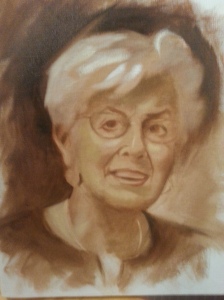 Kay Erwood, three hour’s progress, oil on linen, 10″ x 18″
Kay Erwood, three hour’s progress, oil on linen, 10″ x 18″
——
“The woods are lovely, and dark, and deep,
but I have promises to keep,
and miles to go before I sleep,
and miles to go before I sleep.”
-Robert Frost
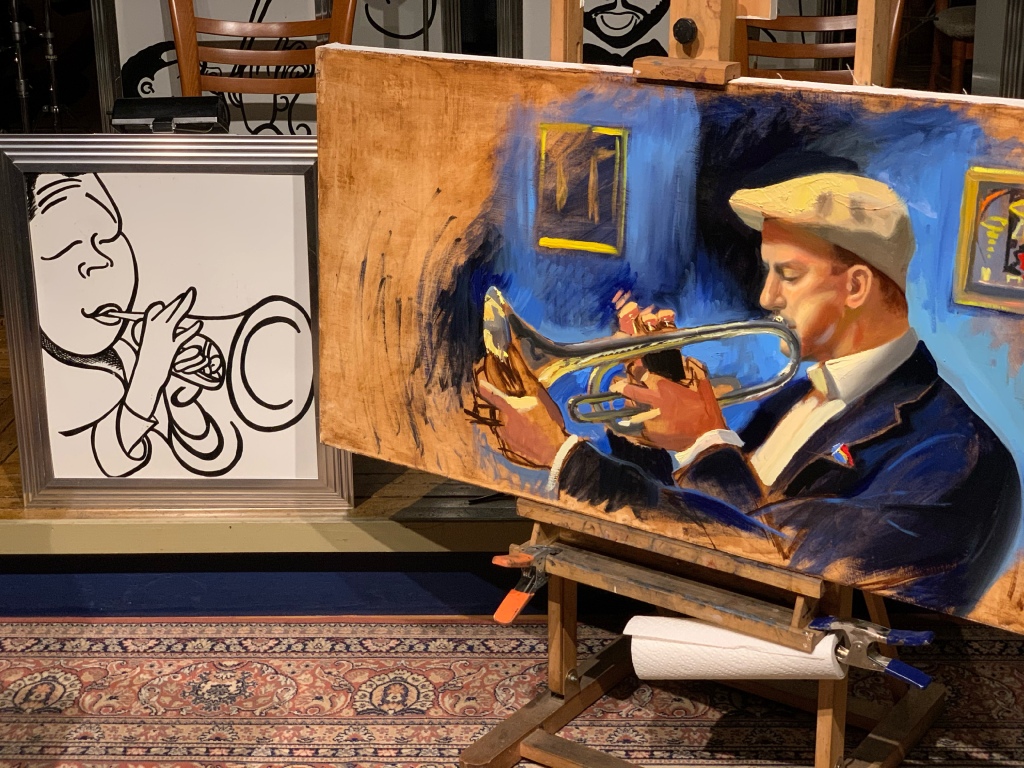
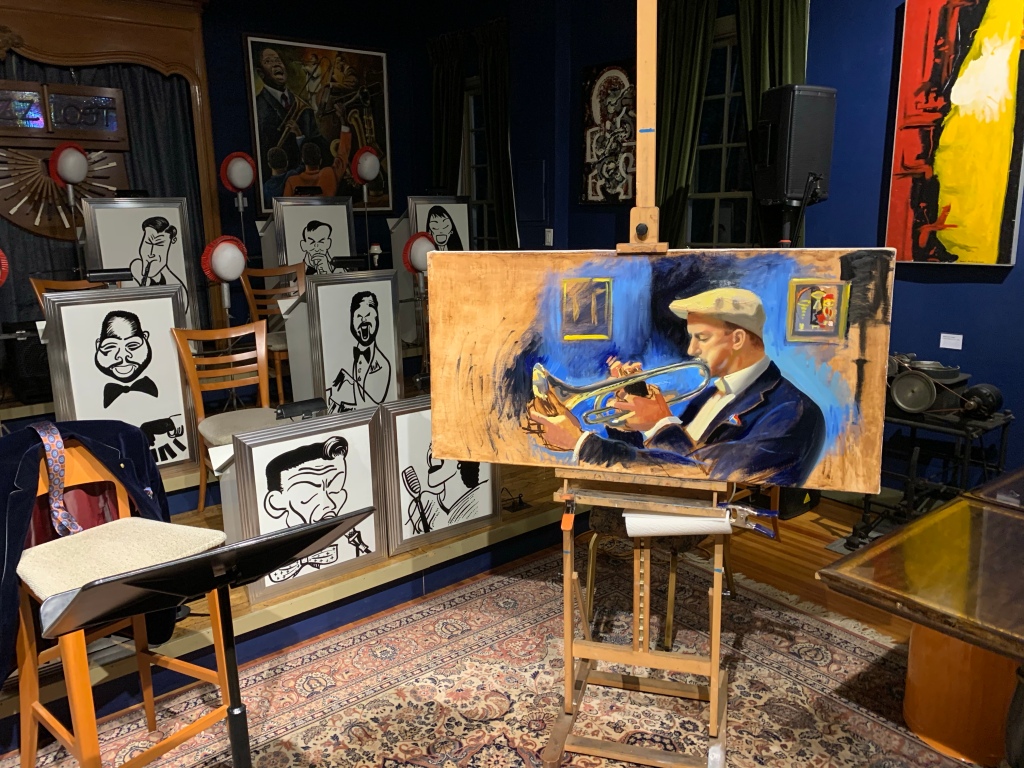
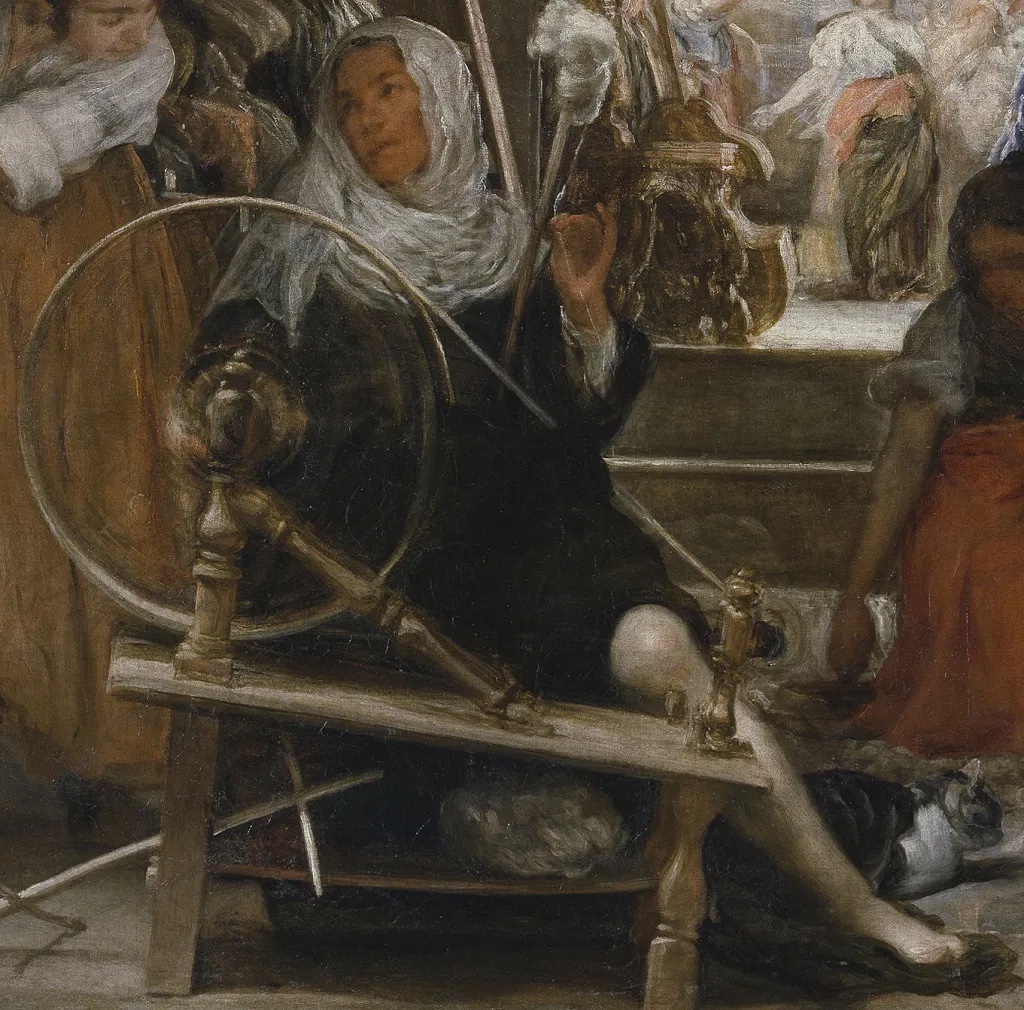


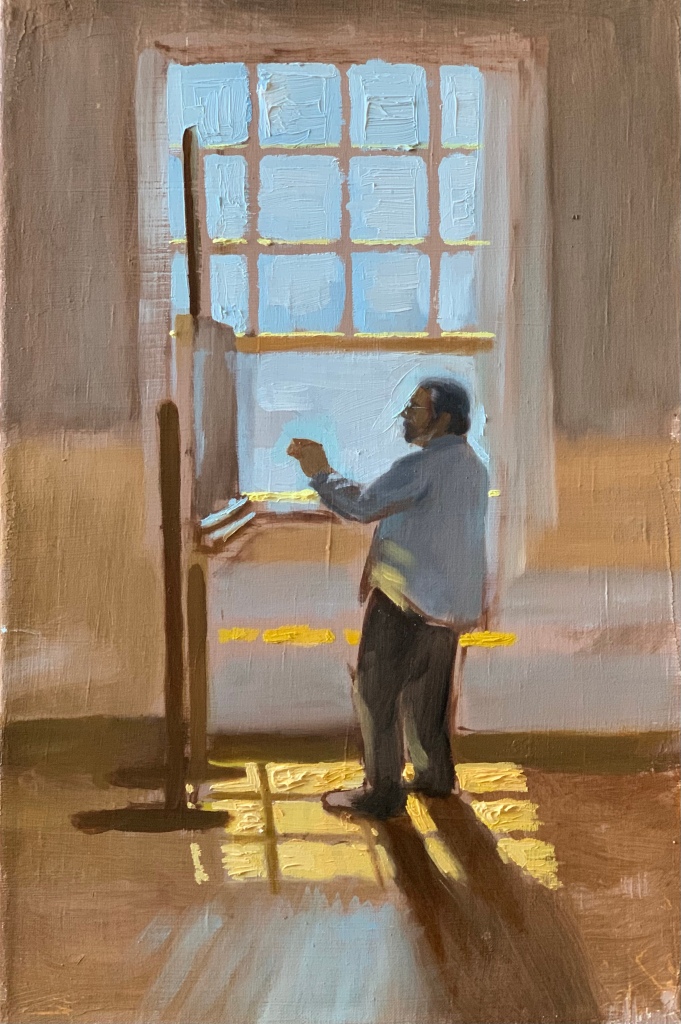
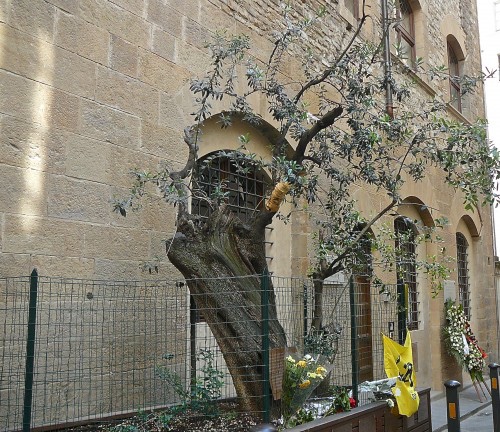
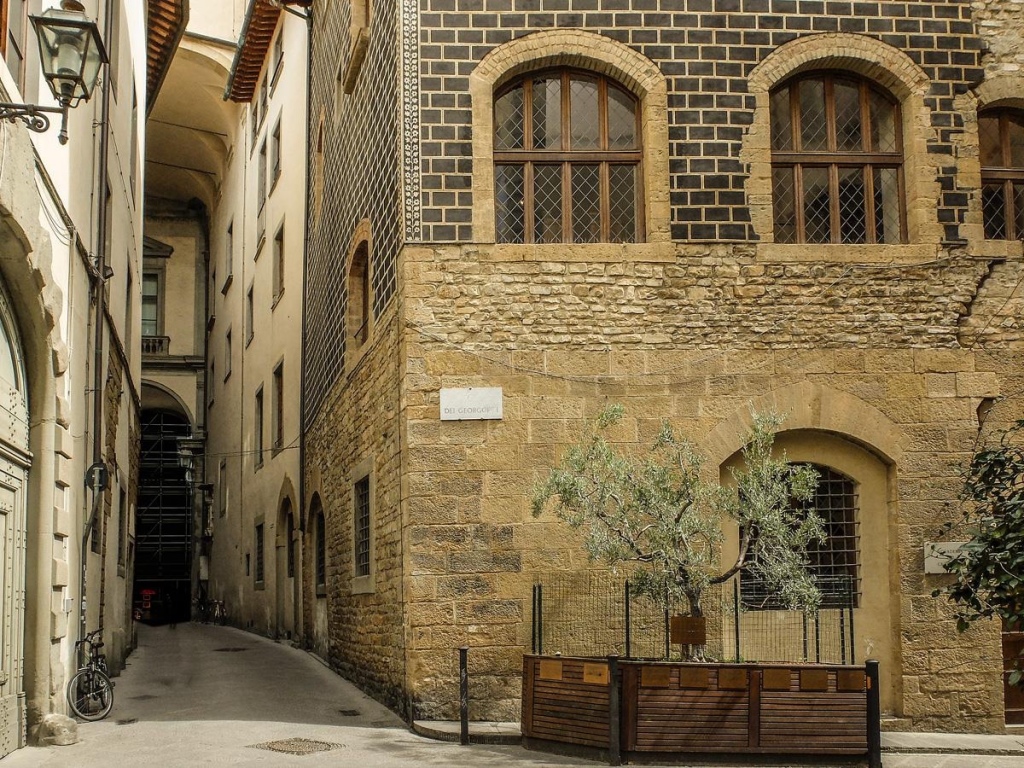
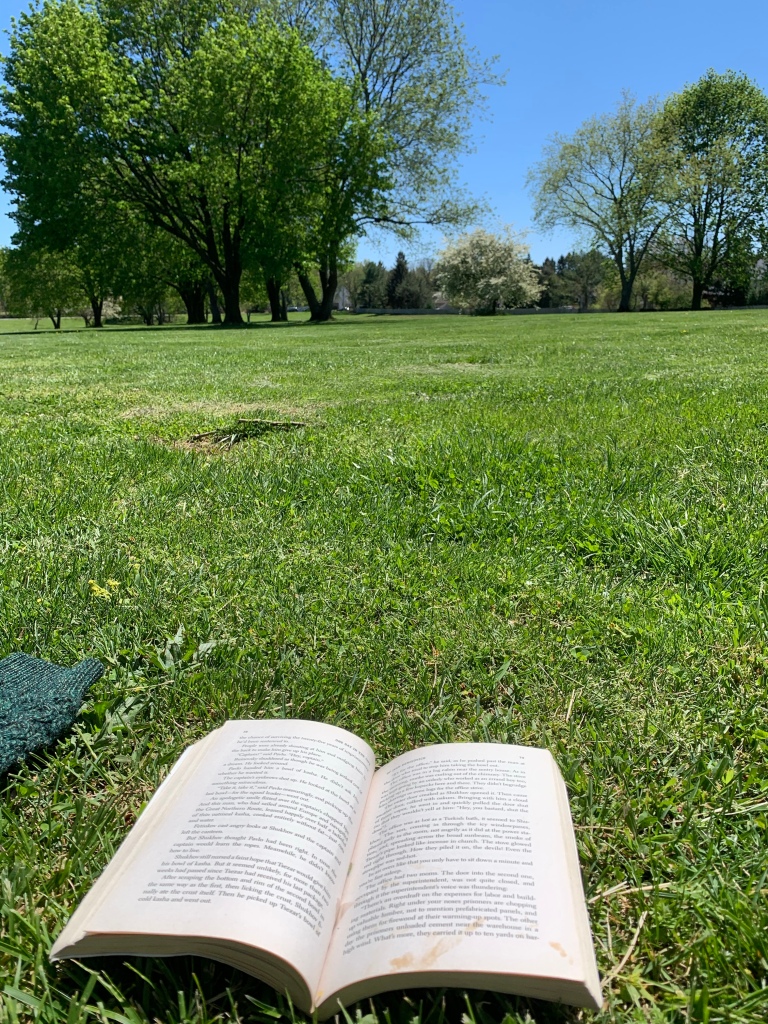
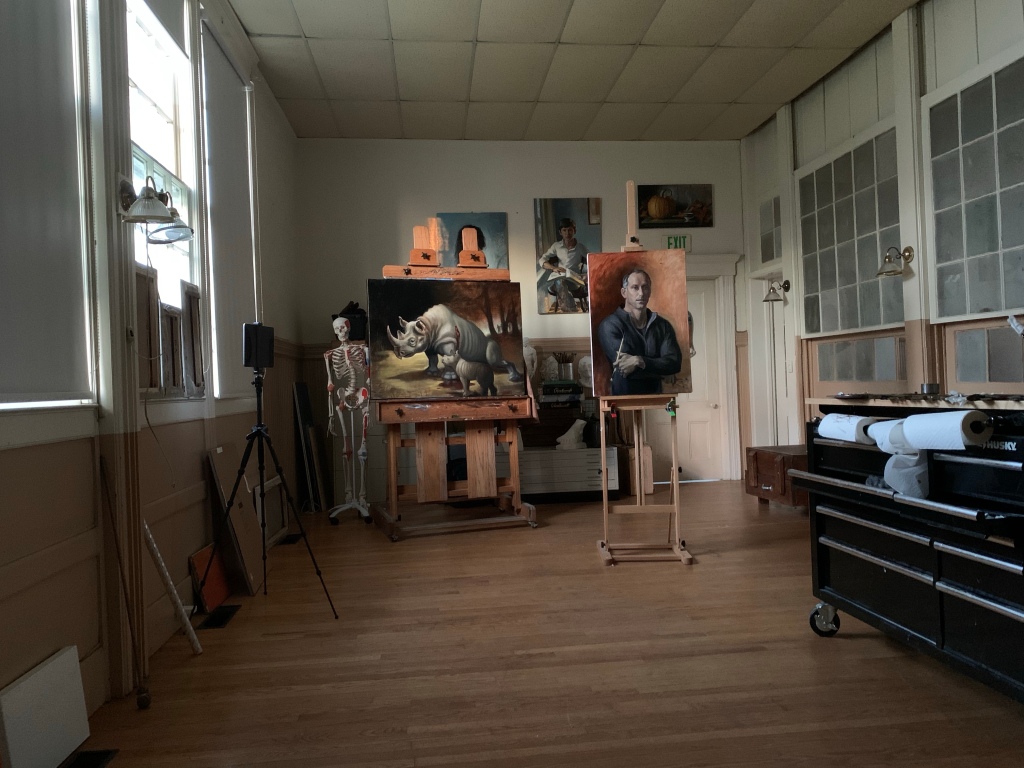
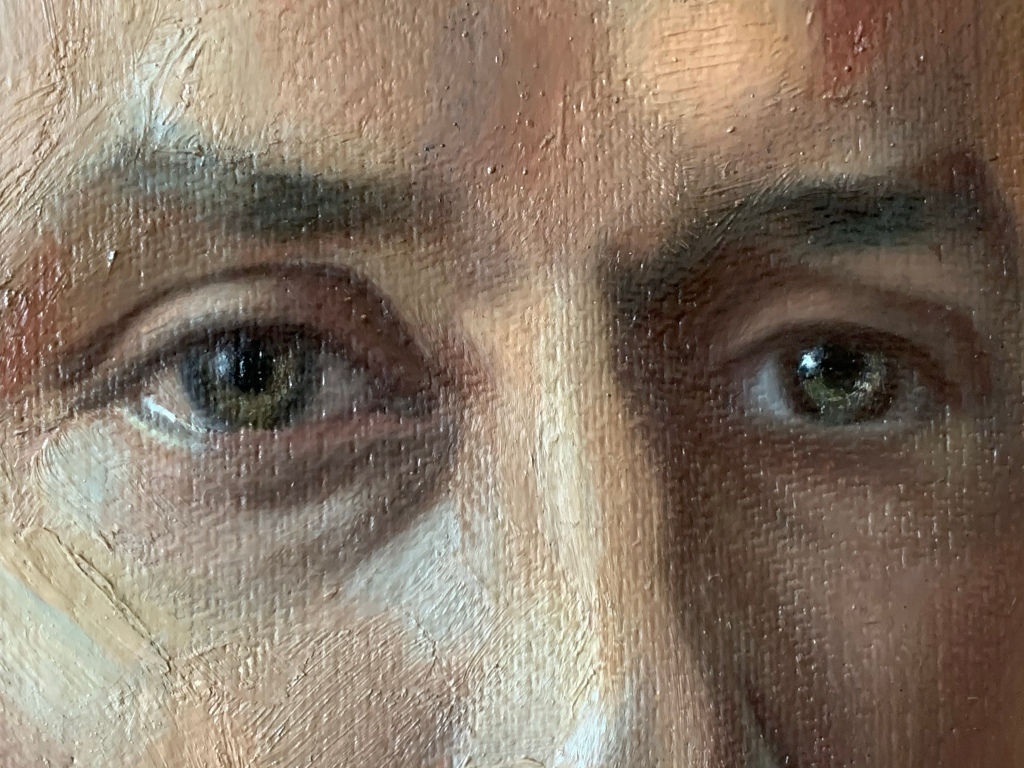
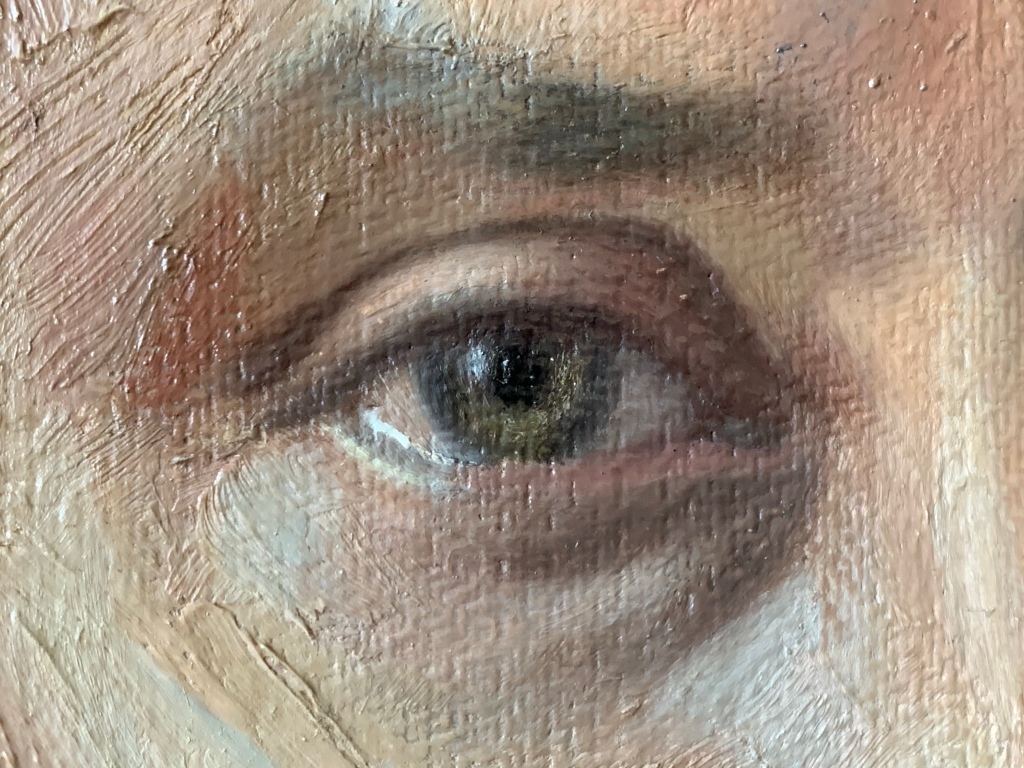
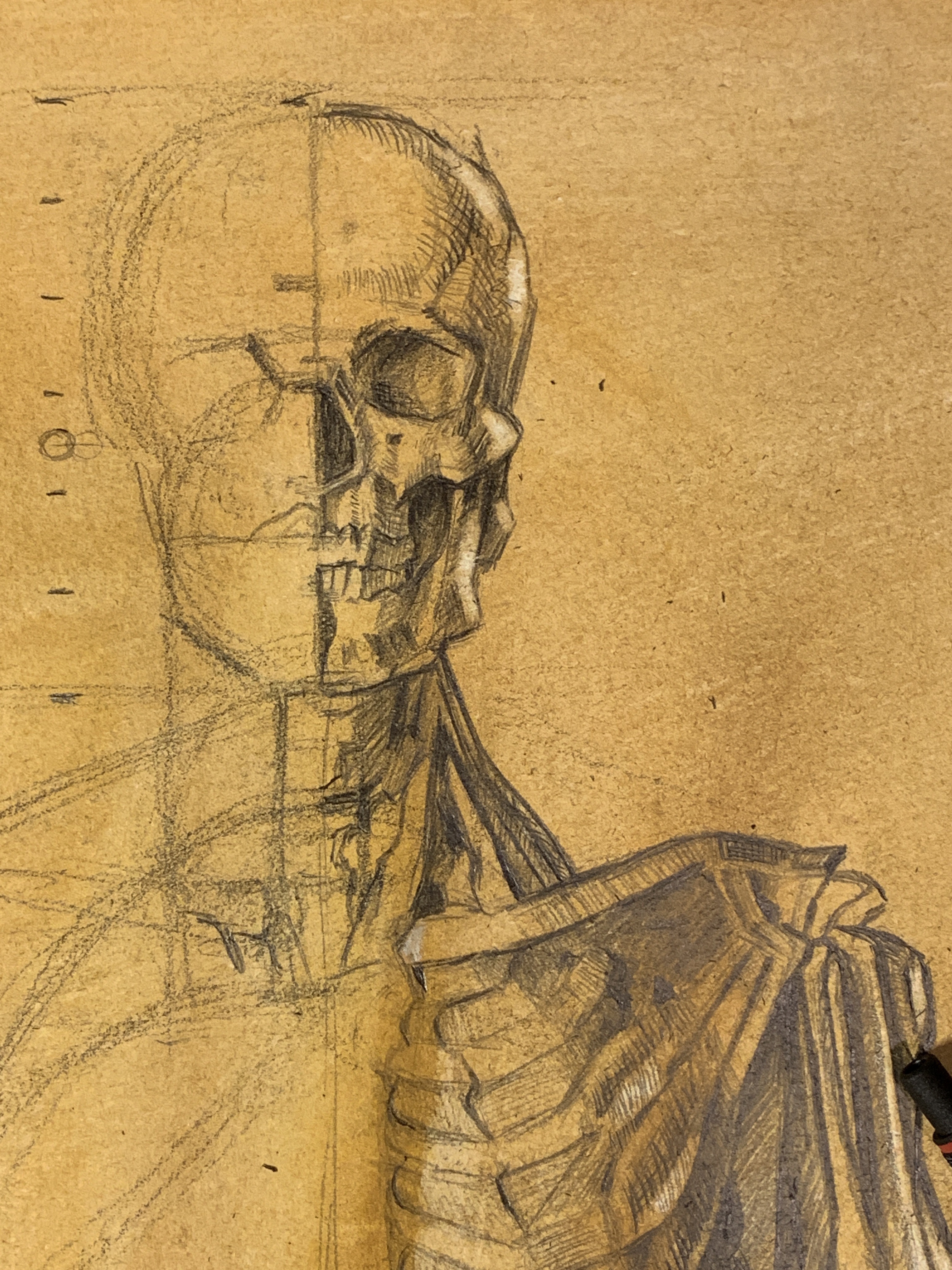 I’ve been gone from this blog for four years. I will one day write down the profound, terrifying, and unspeakably beautiful story of the years the years that have transpired. But that is for another time. For now, suffice to say- I’m back.
I’ve been gone from this blog for four years. I will one day write down the profound, terrifying, and unspeakably beautiful story of the years the years that have transpired. But that is for another time. For now, suffice to say- I’m back.